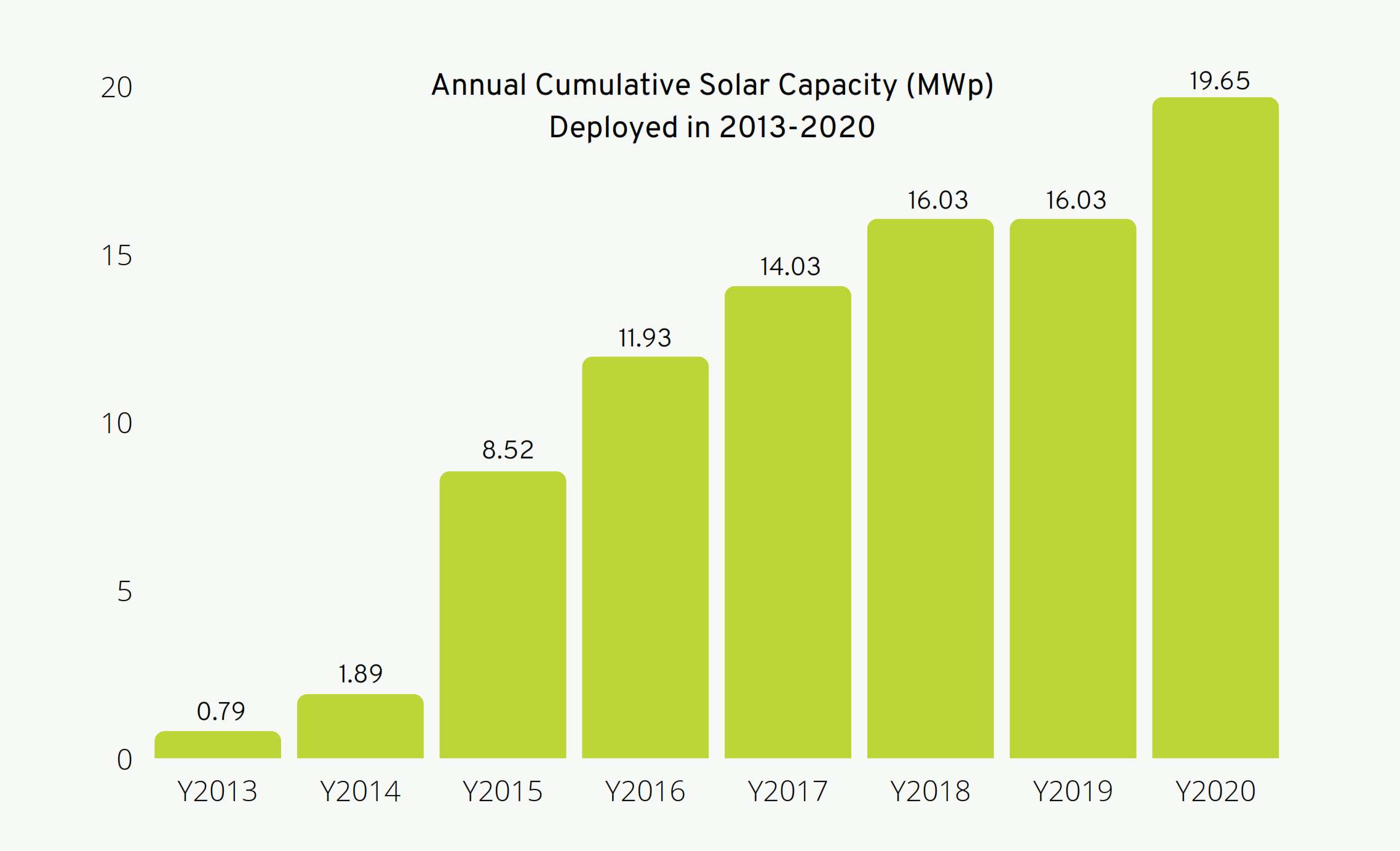Sustainability > Singapore Aerospace Industry Solar Adoption Report 2021 > Key Findings
KEY FINDINGS
-
Total deployed solar capacity by the aerospace industry
(as of June 2021)
19.65 MWp

A total of 14 solar projects were implemented in the period 2013 to 2020, with an annual average growth rate of 83.6% in solar capacity. The implementation peak was in 2015 with 6 projects generating a total of 6.63 MWp capacity. 1 Megawatt-peak (MWp) is the nominal power rating achieved under ideal solar irradiance conditions, and is equivalent to the maximum power generated by 3,333 solar panels each with a rating of 300W.
The industry’s solar adoption looks set to grow incrementally. From the survey feedback, there are 3 projects scheduled to be operational in 2021 and a potential pipeline of 12 additional projects, i.e. the companies have indicated interest to install solar panels in the near future.
The installed capacity of 19.65 MWp accounts for 4.4% of Singapore’s total solar capacity of 443.60 MWp[2]. If we are looking at just the non-residential private sector installations in Singapore as the base, the aerospace industry’s installed capacity would account for 8.3%.
This is a noteworthy sectoral achievement, bearing in mind that the aerospace industry accounts for a proportionately smaller 1% of Singapore’s Gross Domestic Product (GDP)[3].
-
Total electricity produced annually
21.18 million kWh
-
Solar energy as share of respondents’ overall energy consumption
10.7%
The contribution varies from 4% to 95% across the companies that have deployed solar energy, in view of the amount of rooftop space available and the nature of their operations. 10.7% is a weighted average.
-
Amount of building, hangar and car park roof space used
123,053 sqm
This is the amount of space — equivalent to 17 soccer fields – that has been repurposed for economic and environmental benefits.
References
[2] Installed capacity of grid-connected solar PV systems in Singapore as of Q1 2021, based on statistics published by the Energy Market Authority (EMA) (https://www.ema.gov.sg/cmsmedia/47RSU_Q1_2021.pdf).
[3] Source: https://www.businesstimes.com.sg/government-economy/singapores-aerospace-sector-gets-training-support-from-the-government
[4] A 4-room Housing and Development Board (HDB) apartment consumes a monthly average of 359.1 KWh of power in 2019
(https://www.ema.gov.sg/cmsmedia/8RSU.pdf).
[5] This is using the grid system-wide emission factor of 0.4085 kgCO2 per kWh for 2019
(https://www.ema.gov.sg/cmsmedia/18RSU.pdf).
[6] This is based on an estimate of 22 kg of CO2 absorbed by a mature tree annually, published by the European Environment Agency in 2012 (https://www.eea.europa.eu/articles/forests-health-and-climate-change/key-facts/trees-help-tackle-climate-change).


Recent Comments